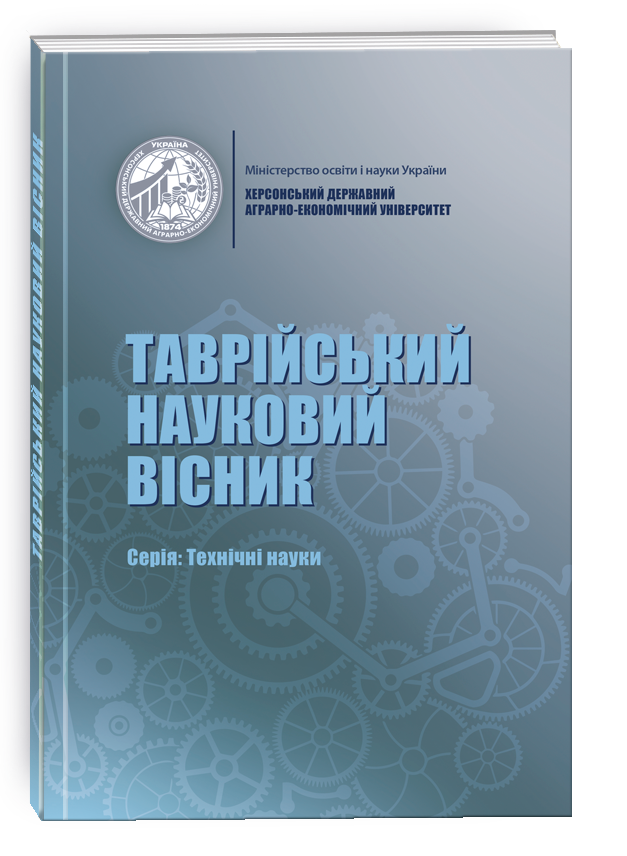PRINCIPLES OF INTRODUCTION OF MACHINE LEARNING MODELS IN THE FIELD OF INTELLECTUAL MAINTENANCE OF INDUSTRIAL EQUIPMENT
DOI:
https://doi.org/10.32851/tnv-tech.2021.3.3Keywords:
machine learning, industrial equipment, intelligent service, model, cloud, personal computerAbstract
The article investigates the principles of implementation of machine learning models in the field of intelligent maintenance of industrial equipment. It is noted that smart manufacturing uses advanced data analytics to supplement physical laws to improve the efficiency of production systems. It is emphasized that with the widespread use of sensors and the Internet of Things (IoT), the need for processing large production data, characterized by high volume, high speed and high diversity. The scheme of an industrial machine used for rewinding and cutting of packaging film in production is given. The production process is revealed in detail and the structural scheme of system adjustment is made, the model of clustering of parameters for detection of failures in work of the industrial machine is formed. It is emphasized that the data obtained from the sensors are essentially discrete time data taken per second of time, and the decomposition of the time series data showed a tendency to increase the residuals. The obtained time series were stationary by differentiation, and, in turn, the logarithmic transformation was used to reduce the variance of the time series data. At the same time, it is emphasized that differentiation eliminates changes in the level of the time series, and therefore eliminates trends and seasonality, while the average sliding and standard deviation is found regardless of time on the basis of which the stationary diagram is constructed. The stages of forecasting are determined and the model of the integrated moving average is offered. Three models are proposed: the reference vectors method, the deep neural network and the naive Bayesian classifier, all three models are compared and it is proved that the deep neural network model was more effective in modeling the data. The forecast model is built to reduce low-quality production cycles and maintenance planning. Thus, it is emphasized that machine learning based on IoT will help to overcome significant productivity constraints and associated maintenance costs, which in general will significantly increase the productivity of production equipment.
References
Олійник О.Ю., Тараненко Ю.К. Система безперервного вібромоніторингу стану технологічного обладнання з машинним навчанням класифікатору. Інформаційні технології та комп'ютерна інженерія. 2020. № 2. С. 18–26.
Подскребко О.С., Квашук Д.М., Берідзе-Стаховський А.К. Технології машинного навчання в промисловості з використанням методів розпізнавання образів. Економіка та держава. 2019. № 6. С. 46-49.
Хома Ю.В. Теорія і методи комп’ютерного опрацювання біосигналів на основі машинного навчання : дис. … на здобуття наукового ступеня доктора технічних наук : 05.13.05 ; Міністерство освіти і науки України, Національний університет «Львівська політехніка». Львів, 2020. 379 с.
Бідяк М.А., Олійник О.В. Застосування машинного навчання в автоматизації промисловості для технічного обслуговування. «Сучасні методи, інформаційне, програмне та технічне забезпечення систем керування організаційно-технічними та технологічними комплексами» : Матеріали VІІ Міжнародної науково-технічної Internet-конференції, (м. Київ, 26 листопада 2020. Київ : НУХТ, 2020. С. 22–24.
Agrawal S.S., Patel A. CSG cluster: A collaborative similarity based graph clustering for community detection in complex networks. International Journal of Engineering and Advanced Technology. 2019. 8(5). 1682–1687.
Paul R. Daugherty, Wilson H.J. Human+ machine: Reimagining work in the age of AI. Harvard Business Review Press, 2018.
Dhankhad S., Mohammed E., Far B. Supervised machine learning algorithms for credit card fraudulent transaction detection: a comparative study. In 2018 IEEE international conference on information reuse and integration (IRI). 2018. July. Р. 122–125. IEEE.
Agrawal S., Patel A. Clustering algorithm for community detection in complex network: a comprehensive review. Recent Advances in Computer Science and Communications (Formerly: Recent Patents on Computer Science). 2020. 13(4). 542–549.
Amruthnath N., Gupta T. A research study on unsupervised machine learning algorithms for early fault detection in predictive maintenance. In 2018 5th International Conference on Industrial Engineering and Applications (ICIEA). 2018. April Р. 355–361. IEEE.
Patel N., Oza P., Agrawal S. Homomorphic cryptography and its applications in various domains. In International Conference on Innovative Computing and Communications. Springer, Singapore, 2019. Р. 269–278.
Machine learning based models for fault detection in automatic meter reading systems. In 2017 International Conference on Security, Pattern Analysis, and Cybernetics (SPAC) / Y. Kou et al. 2017. December. P. 684–689. IEEE.
Specification of the Application of Vibrodiagnostics in Assessing the State of the Industrial Robot. Advances in Science and Technology. Research Journal / N. Daneshjo et al. 2019. 13(1).
Puchalski A. A technique for the vibration signal analysis in vehicle diagnostics. Mechanical Systems and Signal Processing. 2015. 56. 173–180.
Модель прогнозування геопросторових даних в системах обробки геопросторової інформації. Системи озброєння і військова техніка / Г.В. Худов та ін. 2021. № 2 (66). С. 123–128. URL: https://doi.org/10.30748/soivt.2021.66.16







